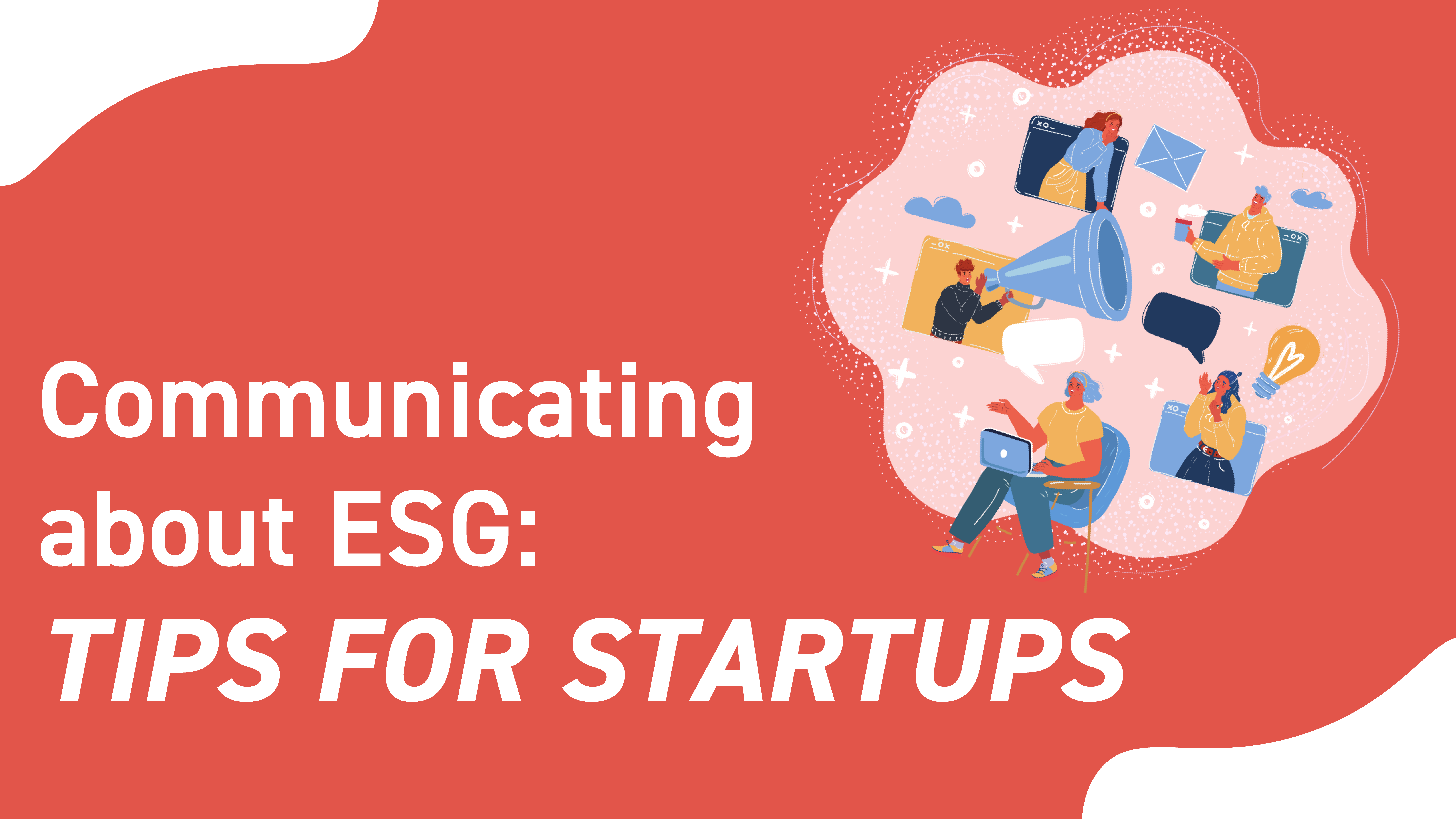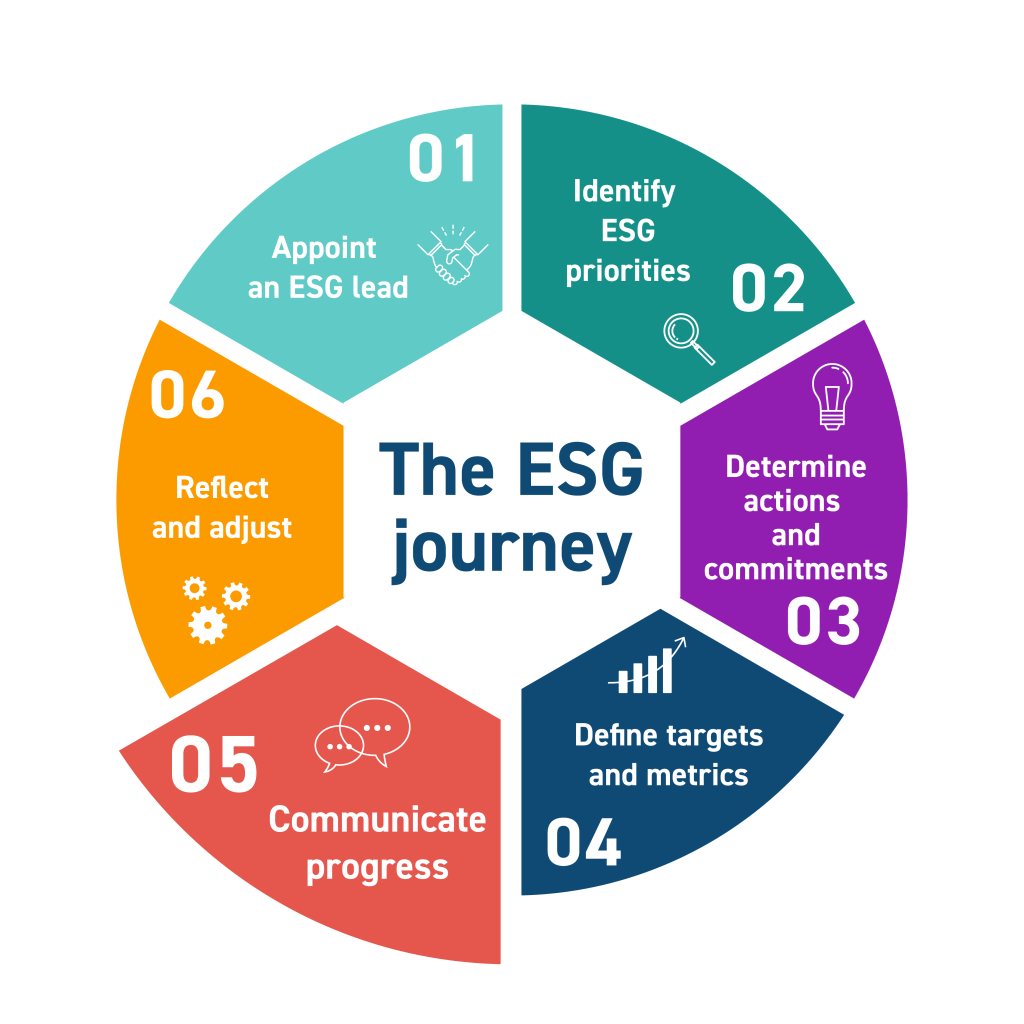
The original blog post in Japanese was published on August 10, 2022.
Once the ESG actions and metrics are in place for each materiality, companies should shift their focus to communicating about it. While developing an ESG strategy and roadmap is central to taking action on ESG, it’s critical to (at a minimum) ensure key stakeholders are aligned. Developing a well-thought-through and structured communications strategy and plan will play a central role in achieving that alignment.
This blog covers step 5: communicating progress.

First, let’s understand why communication is necessary in implementing ESG in the company. Possible reasons include the following:
- ESG is now a priority at the company, with a lot of thought and resources put into building the strategy and plan. Thus, it’s important the company keeps stakeholders abreast of what ESG strategies and actions it has been working on.
- Communication keeps the founder, their direct reports, and the whole organization accountable.
- It provides an opportunity for the recipients to react to and provide input/feedback on what’s been developed.
- Strategically communicating about ESG and related initiatives signals to stakeholders that it really matters, both internally and externally.
When developing the communications plan, address the fundamental “what,” “who,” “when,” and “how” elements that are at the foundation of a good communications plan.
What
- Will certain or all elements of the ESG roadmap be communicated? What’s the rationale for this choice?
- What is the communication goal/objective?
Internal communications tips
It’s best to communicate the full ESG strategy to the internal team. Explain the process and thinking behind the choices made in building the ESG strategy and roadmap.
External communications tips
Before developing the communications strategy and plan, speak with stakeholders to understand the level of information they want to see.Differing stakeholder interests on this topic can be effectively managed by having different modes of communication (further details on this to come).
Who
- Who is the target of the communication?
- Who’s involved in the process? Who has not yet been included in the process?
Internal communications tips
Because execution of initiatives falls mainly on employees—who are the most critical stakeholder group—the whole company needs to be kept in the loop throughout the process.
External communications tips
Think strategically about how to reach each group, and what the best channels are.
When
- How often will progress updates be provided after the first communication?
- Will communications be aligned with periodic performance reporting (e.g., quarterly or bi-annual updates to investors, etc.)?
Internal communications tips
Employees should be given and/or participate in (if they are working on ESG initiatives) regular progress updates, which can be integrated into regular team meetings.
It is important to touch base with employees who are involved in certain actions more regularly and get feedback on how their work is going.
External communications tips
Once the decision has been made on what to share, start sooner rather than later; and if big milestones are imminent such as an IPO, schedule the ESG strategy and roadmap announcement well in advance to give key stakeholders time to assess.
How
Are communications channels aligned with key messages and stakeholder needs?
Internal communications tips
Modes of communication already used within the company should be leveraged first. New ones (e.g., internal newsletters, etc.) should only be created when necessary.
External communications tips
While the mode of communications should align with each stakeholder’s preference, this is unlikely to be the most efficient approach, so instead identify which stakeholders are most crucial and prioritize their preferred modes of communication.
For lower-priority stakeholders, opt for more-generalized communications (e.g., Substack, LinkedIn or Instagram posts, etc.).
When the feedback obtained from each stakeholder interaction is reflected in the roadmap, the cycle finally comes to an end.
One blog post is left in the current series – in the next post, we will conclude with a summary of resources that can help the company kickstart their ESG integration.
We thank Trista Bridges for her contributions to this post.